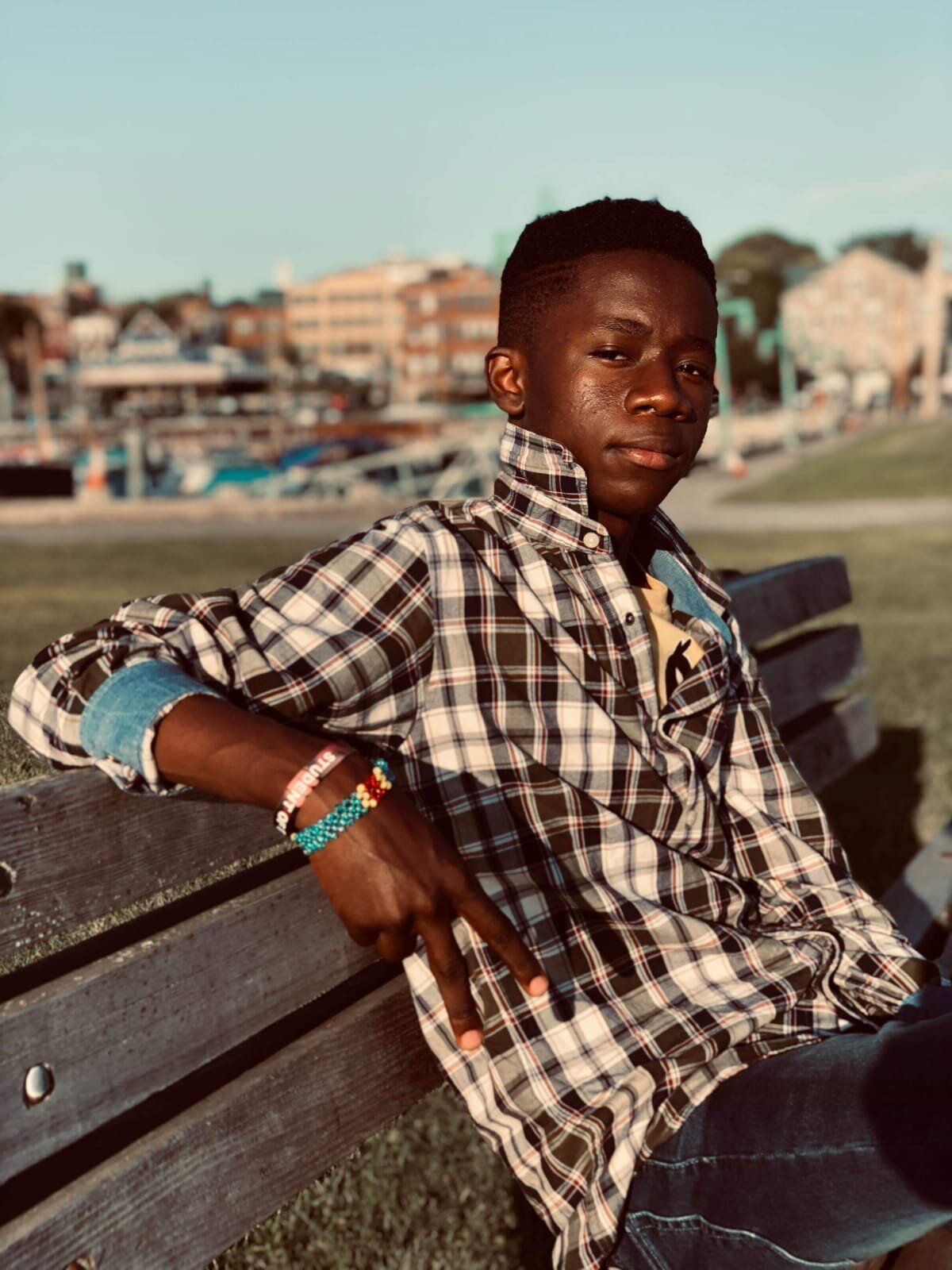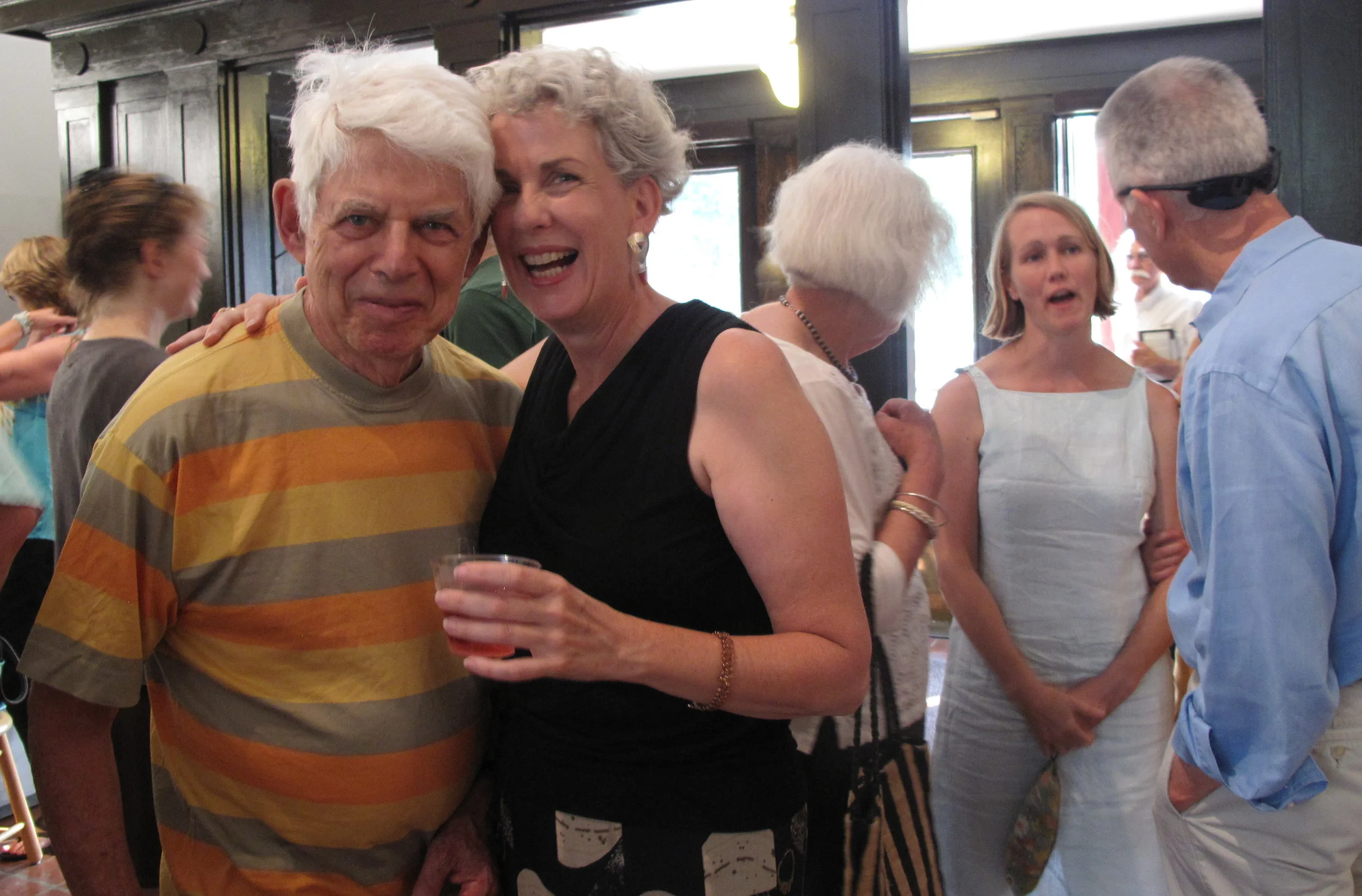“Let’s not lose our experience of joy in the world”
Adria Arch: On Reflection is an immersive installation featuring an abstract sculpture suspended from the ceiling of the Museum’s Mary Sommer Room accompanied by a soundscape by composer Ken Field. It is inspired by the movement and reflectivity of the Connecticut River as it flows past Brattleboro.
Arch is a mixed-media artist whose work is in numerous public and private collections, including the Boston Public Library and the DeCordova Sculpture Park and Museum. She has taught painting, drawing, and printmaking at Montserrat College of Art and Massachusetts College of Art and Design.
BMAC Chief Curator Mara Williams spoke with Arch in March 2021.
Mara Williams: In your studio, this piece originally had a lot of verticality and multiple layers that floated among themselves. The piece in Brattleboro looks like a giant swooped leaf or a giant hammock—very different from what you had anticipated doing. Could you talk about site-specific installation and how the piece changed when you brought it into the site?
Adria Arch: Because of the pandemic, I had an extra nine months to work on the piece, and in that time, I discovered another material that is stronger and more substantial than the initial material. I started using it for all of the work that I did. So that accounts for some of the changes that happened.
I’ve come to sculpture as a painter. This whole series started in paper some three years ago, and over time it morphed into using something called Sintra, which is a lightweight PVC plastic. That was great, but it wasn’t as sturdy. The next weight up is a quarter-inch PVC material that holds up much better. I like the substantiality of the newer material.
The way I was going to hang the piece also shifted. This has been a wonderful time for me in terms of creativity and innovation in terms of materials. The movement of the sculpture, the sounds that accompany it, the materials—all of this really started to shift and change the look of the piece.
It’s very interesting to work toward a space that you aren’t able to work in when you’re designing it. In my studio, I marked off the parameters of the Mary Sommer Room with tape on the floor. I had planned on putting two pieces in there, and it was very clear that two pieces would be way too many.
Williams: This piece was supposed to happen last summer, and it was postponed for a year because of the pandemic. I think that extra year added two or three more layers to this project.
Arch: Absolutely. It would have been a different piece. I had finished it, but when I realized I wanted to make it in a more substantial material, I then had to figure out how to get the motors to work, and the sound, and how fast or slowly I wanted the piece to move.
Like all artists working during this time, I’m in the studio asking, “Is what I’m doing even relevant? Will it still be relevant in a year?” I began to think that what I wanted for the space was to give people a place to slow down and consider. The title, “On Reflection,” began to be about reflection on the year, on oneself, on one’s place in the world. Happily, the reflectivity and the shadows both ended up being great metaphors.
Williams: In the central section of the piece, there’s a cutout that looks like window panes. It doesn’t read like a ladder when you look at the piece, but where the silver reflective materials are used, the light-struck reflection is one of a ladder. It floats magically on the east wall. The idea of having a ladder to help us climb out of this time was very poignant and powerful to me.
Arch: The ladder is a design element I use constantly. But I did not think of that at all. For me, this use of reflective material is brand new. That was so much fun. There is a sign manufacturer next to my studio, and I asked him for help, and he found this reflective adhesive vinyl for me. There are a slew of people behind the artist in terms of materials. I worked with another group of sign makers to find the motorized spinner at the top of the piece, and my husband helped me with this little computer that programs the piece to move very slowly backward and forward at random. I wanted people to be in the space asking “Wait a minute—did that just move?”
Williams: It reminds me of how the incremental changes in James Turrell's light installations affect the whole body, not just the eyes and mind. Your piece moves so slowly, and not on a discernible timer. It gives you that little bit of disequilibrium. You don’t know if it’s your body or the piece that’s moving.
Arch: Exactly. My collaboration with the musician Ken Field was also a really interesting aspect. I knew from the very beginning that I wanted to have sound, and for a long time I didn’t know what it would be. Then I heard someone do a sound bath from the yoga tradition, with bells and drums that resonate, and I thought, this is perfect. This is what I want in there to emphasize the meditative aspect of the piece.
Ken is a saxophonist in his real music life, but he is very capable of all kinds of things, and I had collaborated with him on my piece at the Fitchburg Art Museum in 2019. I explained what I wanted, and he was able to come up with it. I kept telling him, “Slower, more sparse, very slow, very meditative.” I ended up with just what I had wanted.
All my life I’ve really enjoyed arts that work together. If I had my life to live over again, I’d like to be in the theater, because the coming together of all the art forms is just wonderful.
Williams: Coming out of this pandemic, there’s something wonderful about your biomorphic shapes and crazy luscious 1950s color. It reminds me of Colorforms when I was a kid. You combine the biomorphism of the 1910s and 1920s with the coloration of the 1950s. There’s something so zippy, fun, joyous, and effervescent about the work, beyond its profound qualities.
Arch: That has been a characteristic of my art all along. I seem to make these pieces and shapes that people say are joyous or fun. It’s just what comes out. I like playing with girly shapes that are soft and lace-like or ruffle-like. It’s a way to thumb my nose at stereotypical femininity. I like to use those design elements to poke fun at it. These are shapes I’ve used all my life. I look back at work I was doing in my late 20s and I see the same shapes, the same color sensibility. It’s who I am. It’s my language.
I didn’t think this piece would turn out the way it did. I’m so glad the work is where it is now. I think it’s better for it. I feel as though it does speak to the time right now, where we’re beginning to come out of this whole thing, where we do feel like there is light at the end of the tunnel. I want this piece to say to people, “Let’s think about what's happened, but let’s not lose our experience of joy in the world.”
Williams: There’s both a simplicity and a sense of breath, like a butterfly wing, or a petal that’s been freed, or one leaf tumbling through space. Over the course of your show opening in March and closing in June, there’s going to be a radical upswing in people’s ability to get out and to be uplifted.
Arch: Yes, exactly. I’m hoping a lot of people can get to see it. I really want to hear what people take away from the experience of being in there with it. I’m very curious.
When we first started talking about this piece, I saw the beautiful river sparkling and reflecting light, and that’s what I took back home with me. I then translated into the vocabulary I was working in. It’s been a real journey. I’ve had the river on my mind. That’s the image I kept holding onto, the moving river. It did spark with that, but things take on a life of their own.
Williams: Do you have a sense of where your work is going next?
Arch: I want my work to be accessible to a lot of people. I want to bring some sort of experience of renewal to people. I will continue to work to create these kinds of interactive experiences. Installation feels so comfortable to me. I’m thinking about getting into heavier materials so I can show outside. I have two other concurrent shows: at the Boston Sculptors Gallery in April, and in a group show at the Danforth Art Museum in Framingham, Massachusetts. The three shows are related, but they’re not at all the same.
It’s a big question. To be determined. Check in with me next year!
RELATED RESOURCES









